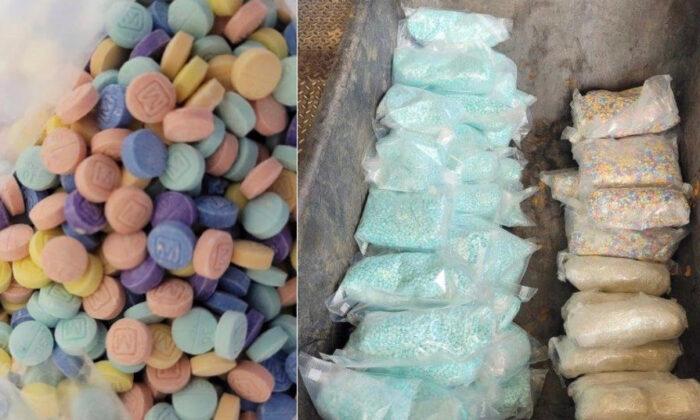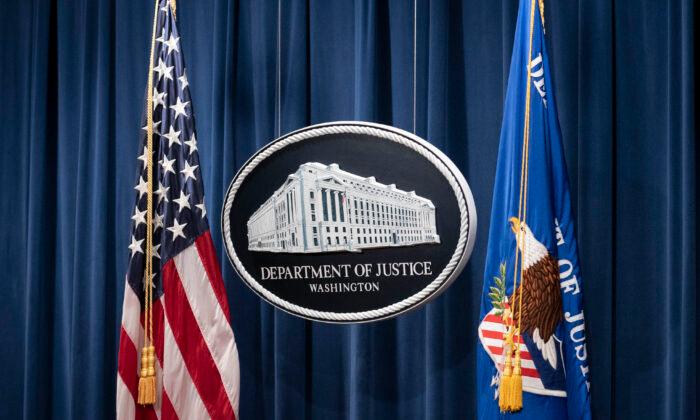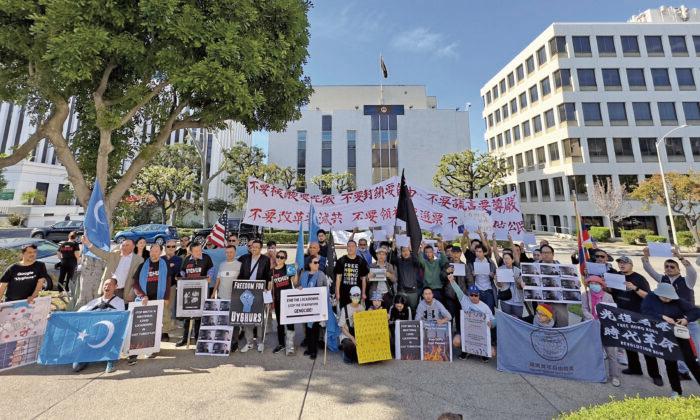With Halloween falling on Oct. 31, many children are looking forward to trick-or-treating. However, with the trafficking of fentanyl on the rise, U.S. law enforcers have reminded parents to stay on high alert to avoid “fentanyl” candies.
A number of cases of fentanyl pills disguised as candies have been recently identified with the Pasadena Police Department in September seizing more than 300,000 fentanyl pills, including brightly-colored “rainbow fentanyl” that looks like candy.
On Oct. 12, the U.S. Drug Enforcement Administration (DEA) and New York law enforcement officials announced the seizure of 300,000 pills of “rainbow fentanyl” in an apartment.
Most recently, local authorities seized some 12,000 suspected fentanyl pills packaged in popular candy boxes at the Los Angeles International Airport on Oct. 19.
The findings have cast a shadow over the upcoming Halloween.
Stick to Name-Brand Candy
Kenneth Cabrera, a captain with LAPD’s Hollenbeck Division, told The Epoch Times that parents need to be extra careful this year.“You want to make sure that you’re eating name-brand candy that’s sealed,” he said. “It’s very important to inspect it to make sure that no wrapper has been opened or altered or looks like it’s been tampered with.”
As it is difficult to tell the difference between fentanyl candy and normal candy by appearance, taste, and smell, parents have been suggested to soak candy in water and use fentanyl test strips to determine whether the candy is abnormal.
If someone accidentally takes fentanyl, the medication Naloxone can reverse the toxic effects.

Alfonso Mendoza, another captain at the Hollenbeck Division, stressed that it’s parents’ responsibility to take care of their kids’ safety.
“And really at the end of the day, make sure that you’re inspecting your children’s candy so that it is safe and let them enjoy it,” he said.
Fentanyl Overdose Deaths
In the past few weeks alone, several teenagers in California have died or been sent to the hospital after accidentally consuming drugs containing fentanyl.According to data from DEA, just 2 mg of fentanyl can be fatal.
Fentanyl is the number one killer of adults between the ages of 18 and 40 in the United States. It’s also the leading cause of drug overdoses among Californians, including teens.
With multiple incidents of “rainbow fentanyl,” federal law enforcement is concerned that drug traffickers are using these candy-like synthetic opioids to lure children.
DEA data shows that the vast majority of fentanyl-containing drugs found in the United States are produced in Mexico, while the chemical ingredients come from China.




